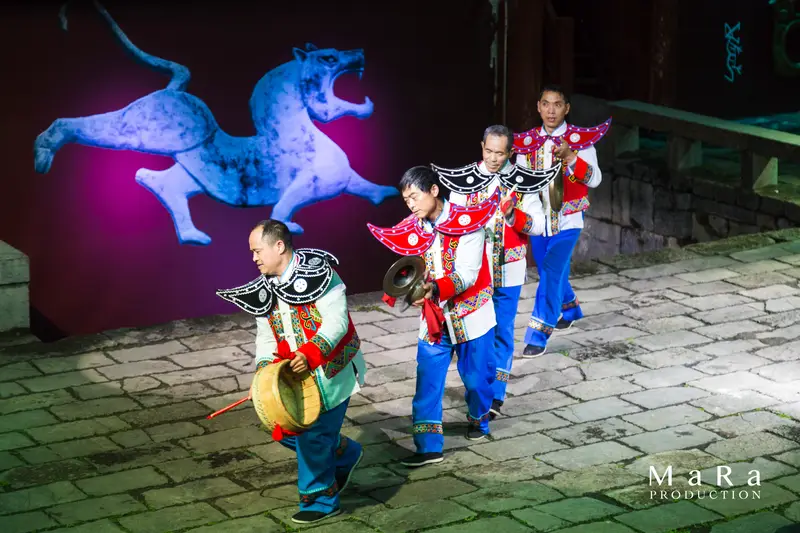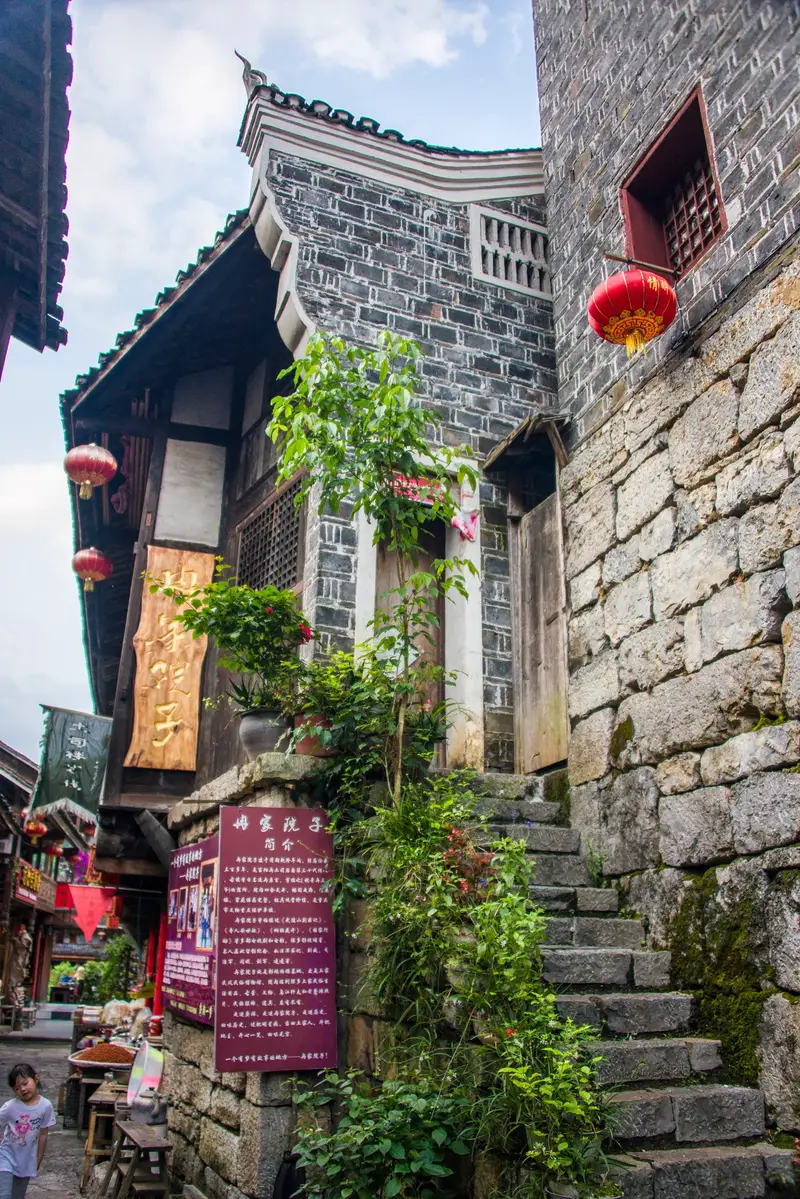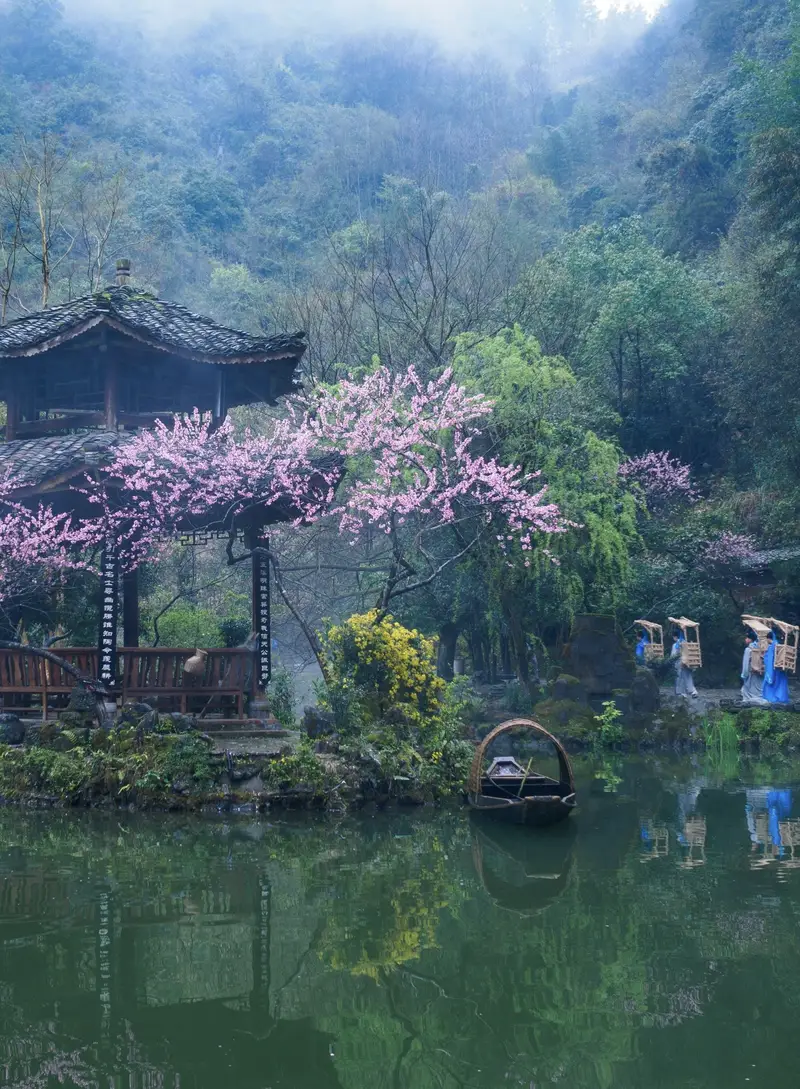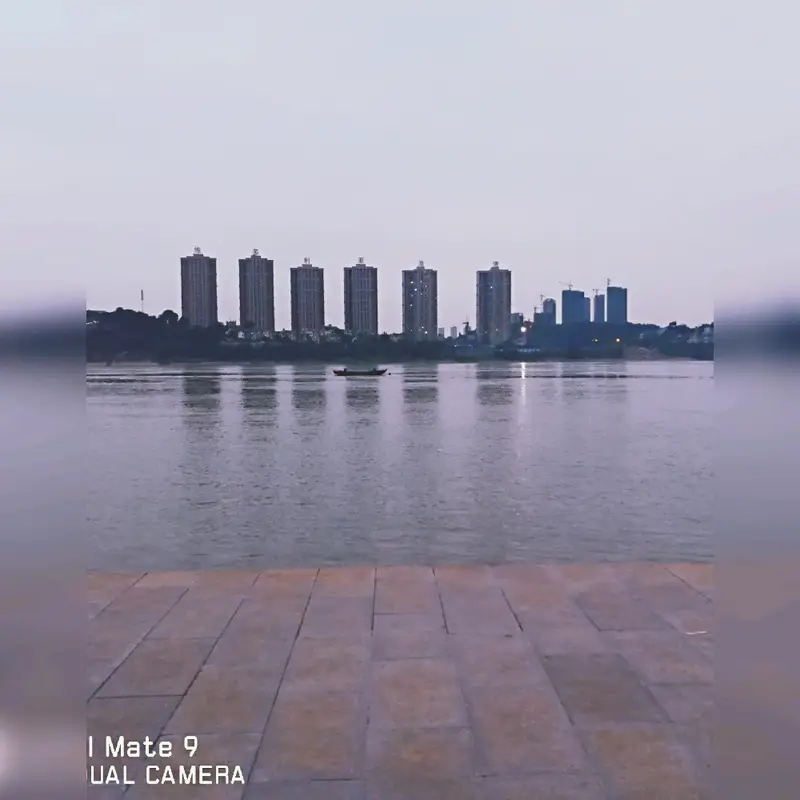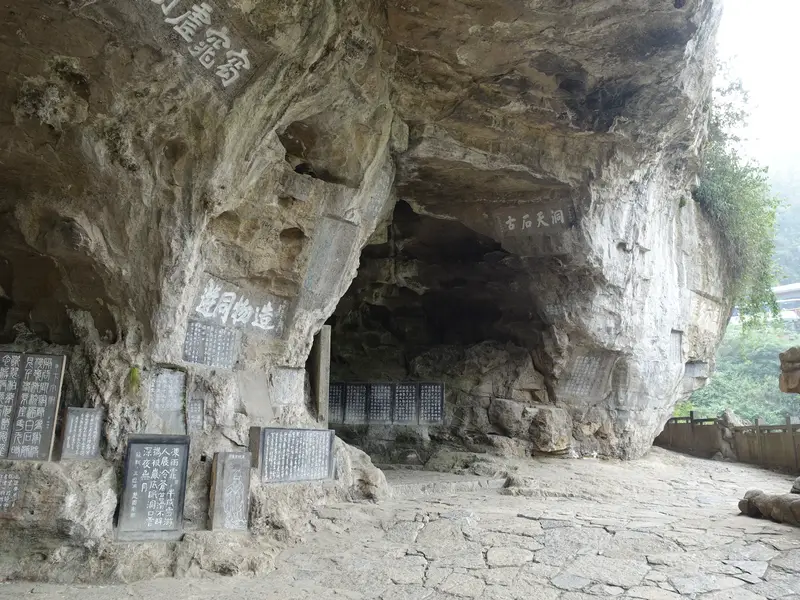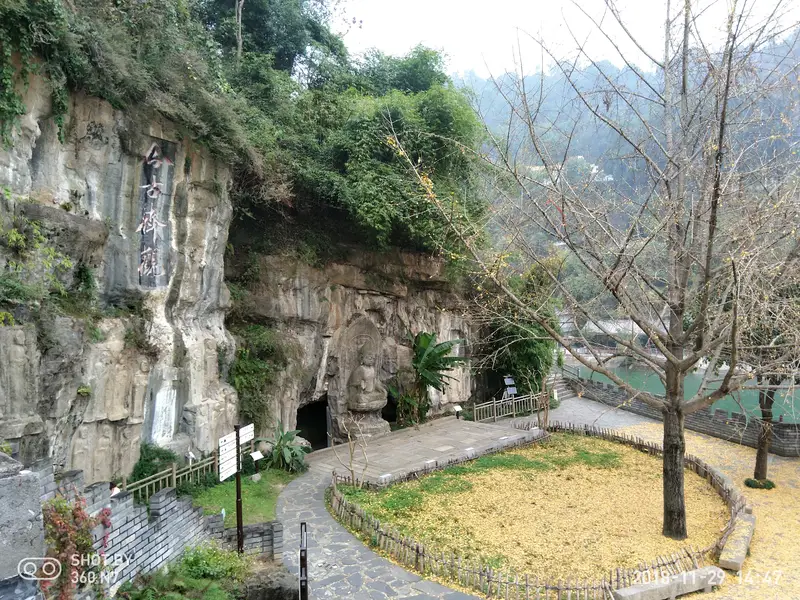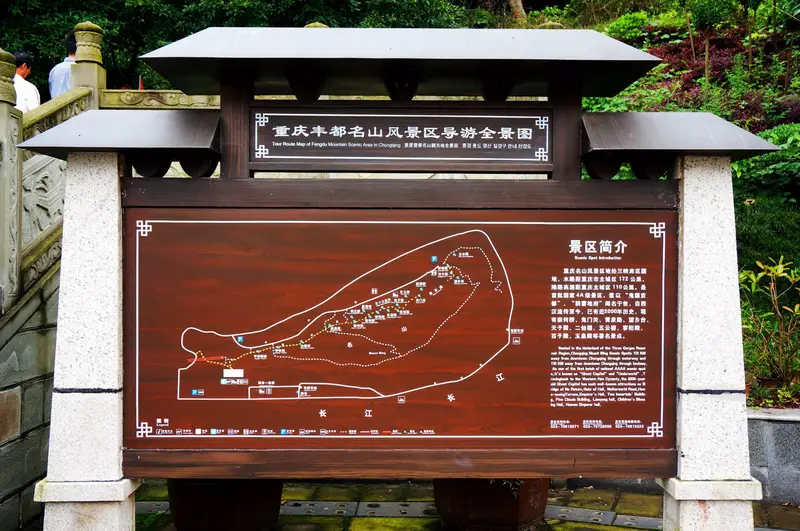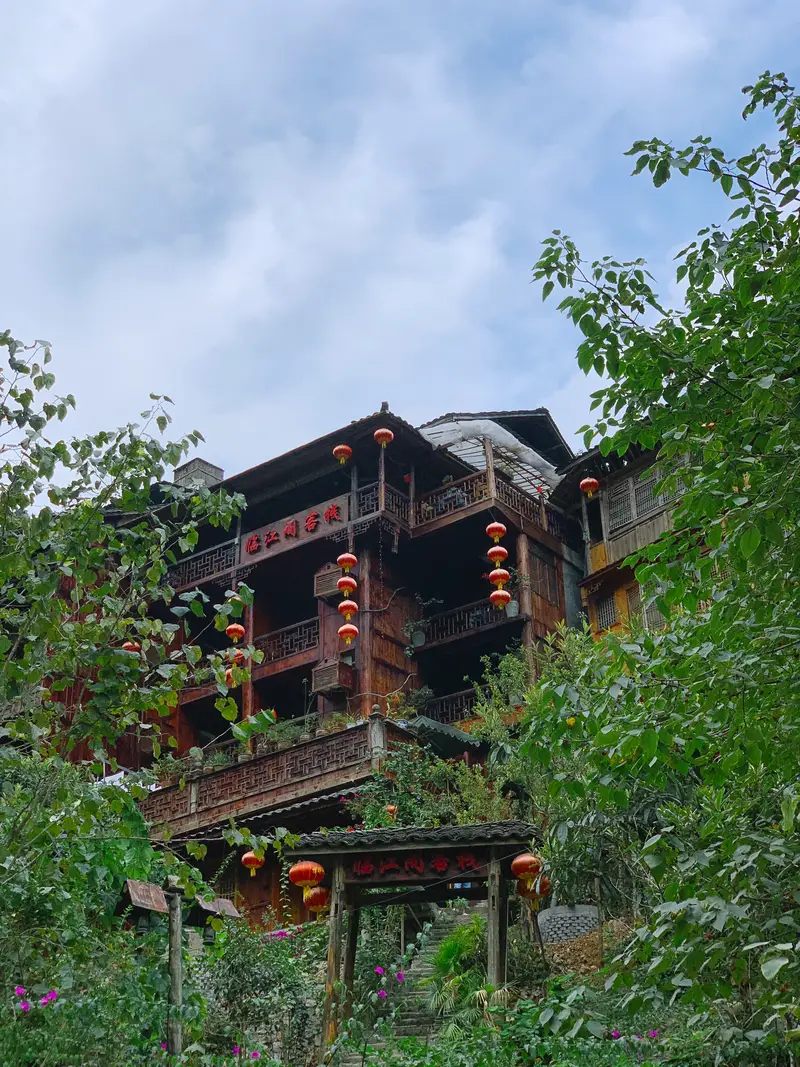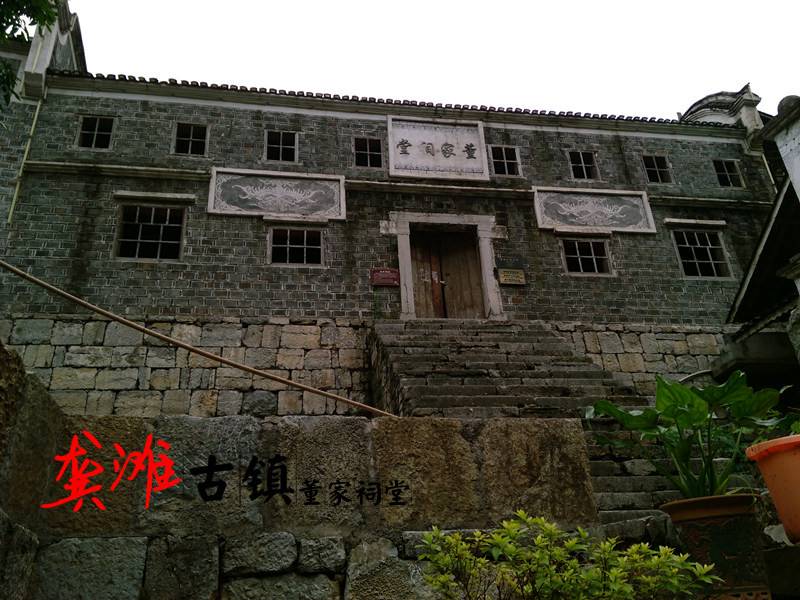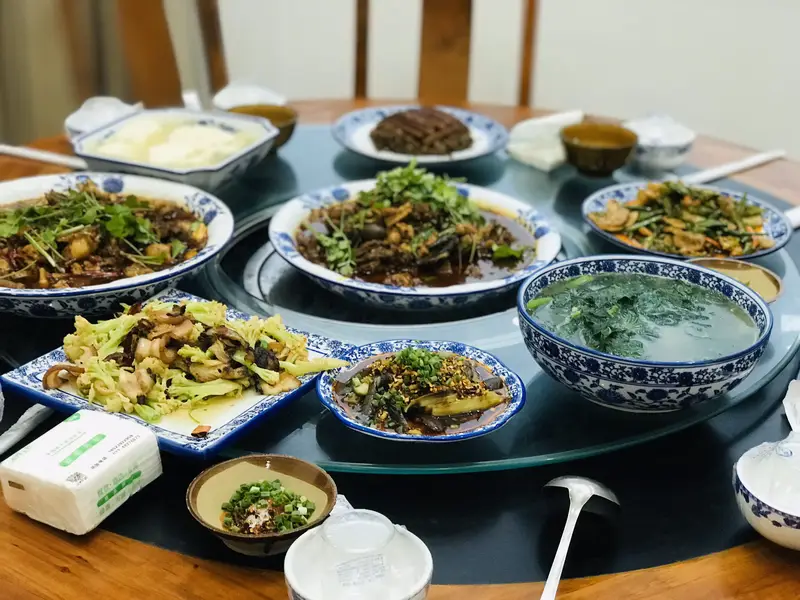Location & Transportation
Xiqin Guild Hall, located at 56 Xiqin Road in Gongtan Town (a Tujia and Miao ethnic town in Youyang, Chongqing), is a hidden gem along the banks of the Wujiang River. To reach here, you’ll first fly into Chongqing Jiangbei Airport or take a train to Chongqing’s main city. From there, it’s a 4-hour bus ride to Youyang County, followed by a short taxi or local bus to Gongtan. The journey feels like stepping back in time—the winding mountain roads and mist-covered valleys set the stage for this ancient town’s charm.
Natural Scenery: Riverside Tranquility
Gongtan Town hugs the Wujiang River, surrounded by steep hills and emerald forests. Xiqin Guild Hall sits near the water, with views of boats slicing through the fog and fishermen casting nets at dawn. The air smells fresh, and the rhythmic sound of river waves adds to the peaceful atmosphere. Though the building itself is human-made, its red walls contrast beautifully with the green mountains and brown wooden houses nearby.
Cultural Significance: A Merchant’s Legacy
Xiqin Guild Hall isn’t just an old building—it’s a story of trade and ambition. In the late 1800s, a Shaanxi merchant named Zhang Pengjiu settled in Gongtan to sell salt. He built this guild hall as a meeting place for fellow traders from his homeland. Back then, it was the town’s tallest and most impressive structure, symbolizing Gongtan’s shift toward modern commerce. Locals call it “Hong Miaozi” (Red Temple) because its bright red walls and temple-like architecture stood out. Even today, its grand gates, stone-paved floors, and intricately carved beams whisper tales of prosperity.
Architectural Beauty: A Blend of Styles
The guild hall’s design mixes Shaanxi traditions with local flavors. Its outer walls are painted a bold crimson, reminiscent of northern Chinese temples, while the layout follows traditional Chinese courtyards. Step inside, and you’ll find:
- A grand entrance facing west, framed by stone lions.
- Main halls and side rooms decorated with gilded carvings of dragons and phoenixes.
- A small theater where merchants once hosted plays.
Though time has weathered its paint and tiles, the towering walls and sturdy structure still exude strength. It’s like a wise old giant, a bit worn but undeniably majestic.
Practical Tips: Visiting the Hall
- Opening hours: Daily 9 AM–5 PM (check locally for seasonal changes).
- Tickets: Around ¥20, often included in Gongtan’s combined heritage site passes.
- Guides: English-speaking guides are rare, but volunteers at the entrance can share basic stories.
- Photo spots: The red walls glow golden at sunset, and the rooftop offers river views.
Exploring Nearby: More Gongtan Magic
After visiting Xiqin Guild Hall, wander down cobblestone streets to see:
- Old salt warehouses that once supplied the region.
- Tujia stilts—wooden houses on pillars over the river.
- Local tea shops where elders play cards and share hot pot.
For food, try Gongtan tofu (silky and spiced) and hand-pulled noodles inspired by Shaanxi recipes.
A Personal Touch: Timeless Yet Fragile
Walking through Xiqin Guild Hall today, you’ll feel a mix of awe and melancholy. The echoes of merchants’ laughter have faded, and some roofs sag under years of rain. Yet, the craftsmanship—from the perfectly fitted stone floors to the delicate woodwork—remains stunning. It’s a place where history feels alive, especially if you close your eyes and imagine salt bags stacked high, or the sound of a Shaanxi accent echoing in the halls.
Whether you’re a history buff, architecture lover, or curious traveler, Xiqin Guild Hall offers a glimpse into China’s commercial past. Just remember: visit soon, because treasures like this need care to stay standing.


